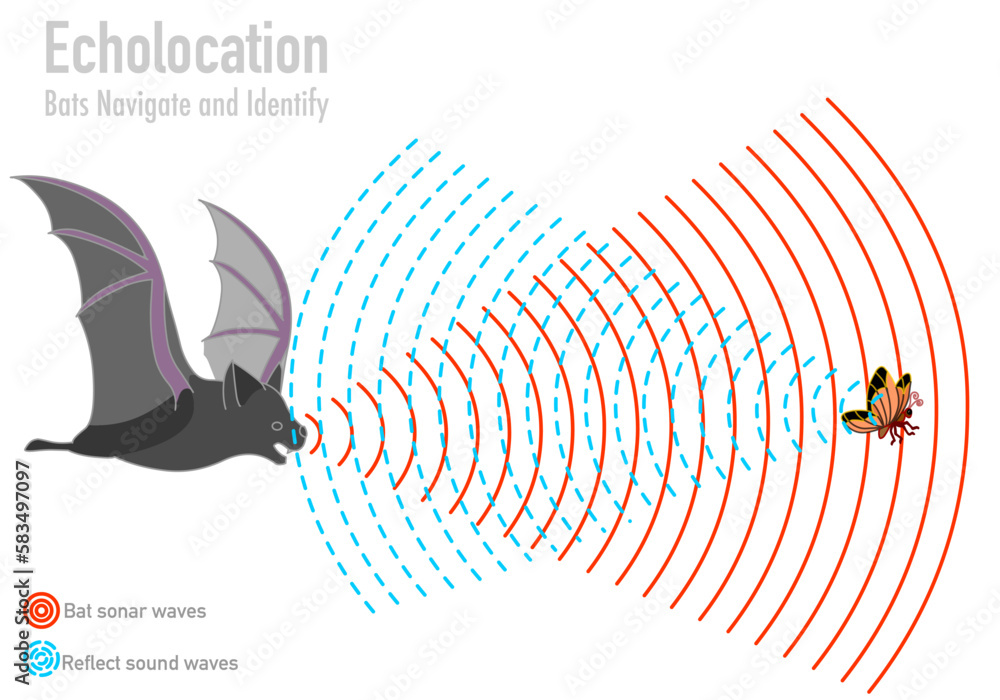Bats waving hello might sound like an anthropomorphic concept, but it actually refers to their intriguing social behaviors and communication techniques. These nocturnal creatures have long been misunderstood, often viewed with fear or superstition. However, recent scientific studies reveal that bats exhibit complex social interactions, including behaviors that resemble waving as a form of communication.
Bats are among the most diverse and ecologically important mammals on the planet. With over 1,400 species worldwide, they play a crucial role in maintaining ecosystem balance by pollinating plants, dispersing seeds, and controlling insect populations. Despite their significance, many people remain unaware of the fascinating ways bats interact with each other and their environment.
This article delves into the world of bat communication, focusing on the phenomenon of "bat waves hello." We will explore their social behaviors, the science behind their communication methods, and why understanding bats is vital for conservation efforts. By the end of this article, you will gain a deeper appreciation for these remarkable creatures.
- Hyatt Place Ann Arbor
- Ny Fashion Week In A Old Ny Church
- National Center For Missing
- Denver Nature And Science Museum
- Long Island Childrens Museum
Table of Contents
- Introduction to Bat Waves Hello
- Understanding Bat Biology
- The Social Structure of Bats
- Communication Methods in Bats
- What Does "Bat Waves Hello" Mean?
- The Ecological Role of Bats
- Conservation Challenges and Efforts
- Common Myths About Bats
- Scientific Research on Bat Behavior
- Conclusion and Call to Action
Introduction to Bat Waves Hello
The phrase "bat waves hello" may evoke curiosity and intrigue. It refers to the unique social behaviors observed in bats, particularly their ability to communicate through body movements, vocalizations, and other signals. While bats do not literally wave their hands, their interactions often mimic human gestures, making them appear as if they are greeting one another.
Bats are highly social animals that live in colonies, sometimes numbering in the thousands. Within these colonies, they engage in a variety of behaviors, including grooming, vocalizing, and even physical gestures that resemble waving. These actions serve as important tools for maintaining social bonds, resolving conflicts, and ensuring group cohesion.
Understanding Bat Biology
Bats belong to the order Chiroptera, which means "hand-wing" in Greek. This name reflects their unique wing structure, which is formed by elongated fingers covered with a thin membrane. Bats are the only mammals capable of true flight, a skill that has evolved over millions of years.
- Is Frontier Airlines Safe
- Costco Wholesale Canada Ltd
- The Royal Sonesta Houston Galleria
- Blue Hills Ski Area
- Lainey Wilson Stanley Cup
There are two main groups of bats: microbats and megabats. Microbats, such as the little brown bat, rely on echolocation to navigate and hunt insects. Megabats, like fruit bats, have larger eyes and rely more on their sense of smell and vision to find food. Both groups exhibit fascinating behaviors that contribute to their survival and success.
The Social Structure of Bats
Bats are highly social creatures that thrive in complex social structures. These structures vary depending on the species, but most bats live in colonies where individuals form close relationships with one another. Some species even exhibit behaviors similar to those seen in primates, such as cooperative parenting and food sharing.
- Maternal colonies: Female bats often gather in groups to raise their young, providing warmth and protection.
- Harem structures: Some species form harem-like groups where a dominant male mates with multiple females.
- Social grooming: Bats engage in grooming behaviors to strengthen social bonds and maintain hygiene.
Communication Methods in Bats
Communication is a vital aspect of bat life. They use a combination of vocalizations, body movements, and chemical signals to interact with one another. These methods ensure that bats can coordinate their activities, locate food, and avoid predators.
Vocalizations
Bats produce a wide range of sounds, from ultrasonic echolocation calls to social vocalizations that humans can hear. These vocalizations serve different purposes, such as attracting mates, warning others of danger, or maintaining group cohesion.
Studies have shown that bats can recognize the unique vocal signatures of their colony members, much like humans recognize familiar voices. This ability helps them maintain social bonds even in large colonies.
What Does "Bat Waves Hello" Mean?
The concept of "bat waves hello" refers to the physical gestures bats use to communicate with one another. While not identical to human waving, these movements often involve flapping their wings or extending their limbs in a manner that resembles a greeting. Scientists believe these gestures serve several purposes:
- Greeting: Bats may use these movements to acknowledge each other upon returning to the roost.
- Conflict resolution: Physical gestures can help resolve disputes without resorting to aggression.
- Courtship: Some species use elaborate displays to attract mates during the breeding season.
The Ecological Role of Bats
Bats play a critical role in maintaining ecological balance. They are essential pollinators and seed dispersers, contributing to the health of ecosystems worldwide. Insectivorous bats also help control pest populations, providing natural pest control services worth billions of dollars annually.
For example, the lesser long-nosed bat is a key pollinator of agave plants in Mexico, which are used to produce tequila. Without bats, many plant species would struggle to reproduce, leading to cascading effects throughout the ecosystem.
Conservation Challenges and Efforts
Despite their importance, bats face numerous threats, including habitat loss, disease, and human persecution. White-nose syndrome, a fungal disease that has decimated bat populations in North America, is one of the most significant challenges facing these creatures today.
Conservation efforts are underway to protect bats and their habitats. These include:
- Establishing protected areas for bat roosting and feeding.
- Developing educational programs to dispel myths and promote bat appreciation.
- Implementing disease management strategies to combat white-nose syndrome.
Common Myths About Bats
Misconceptions about bats abound, often fueled by folklore and media portrayals. Here are some common myths debunked:
- Bats are blind: While some species have poor eyesight, most bats rely on a combination of vision, echolocation, and other senses to navigate their environment.
- All bats drink blood: Only three species of vampire bats feed on blood, and even they prefer livestock over humans.
- Bats are aggressive: Bats are shy and reclusive creatures that pose little threat to humans unless provoked.
Scientific Research on Bat Behavior
Recent advances in technology have allowed scientists to study bat behavior in unprecedented detail. Tools such as acoustic monitoring, GPS tracking, and infrared cameras provide valuable insights into their social interactions and communication methods.
For example, researchers at the University of Maryland discovered that bats use a form of "bat language" to coordinate their movements during flight. This research highlights the complexity of bat communication and underscores the need for further study.
Conclusion and Call to Action
In conclusion, "bat waves hello" is a fascinating phenomenon that sheds light on the social behaviors of these remarkable creatures. By understanding their biology, communication methods, and ecological role, we can appreciate the vital contributions bats make to our world.
We encourage readers to take action by:
- Supporting conservation efforts to protect bat habitats.
- Sharing this article to raise awareness about the importance of bats.
- Exploring other articles on our site to learn more about wildlife and conservation.
Together, we can ensure a brighter future for bats and the ecosystems they inhabit.


Detail Author:
- Name : Danika Stokes
- Username : elyse.kunde
- Email : joseph.willms@fritsch.info
- Birthdate : 1988-11-16
- Address : 470 Hertha Shores Suite 448 West Vivianland, OK 61728-5208
- Phone : +1.463.776.2480
- Company : Cassin PLC
- Job : Air Traffic Controller
- Bio : Voluptatem recusandae quas cum odit. Tempora deserunt aut saepe sed. Tempore voluptatibus voluptatem sit nihil omnis voluptates exercitationem. Accusamus et neque pariatur et et ipsum sint et.
Socials
instagram:
- url : https://instagram.com/antoniadaugherty
- username : antoniadaugherty
- bio : Sit sunt culpa et voluptatem quisquam cupiditate. Corrupti aperiam molestiae hic expedita.
- followers : 476
- following : 1809
twitter:
- url : https://twitter.com/antonia.daugherty
- username : antonia.daugherty
- bio : Recusandae repudiandae non consequatur reiciendis est quia sed. Et deserunt accusamus harum. Amet a sed placeat ut harum. Dolor a veritatis debitis.
- followers : 5246
- following : 1507
tiktok:
- url : https://tiktok.com/@daughertya
- username : daughertya
- bio : Amet aliquid et id dolorum magni porro vel.
- followers : 2113
- following : 2498
facebook:
- url : https://facebook.com/antoniadaugherty
- username : antoniadaugherty
- bio : Earum quam quia aut. Quam magni aut nihil ut perferendis.
- followers : 6540
- following : 910